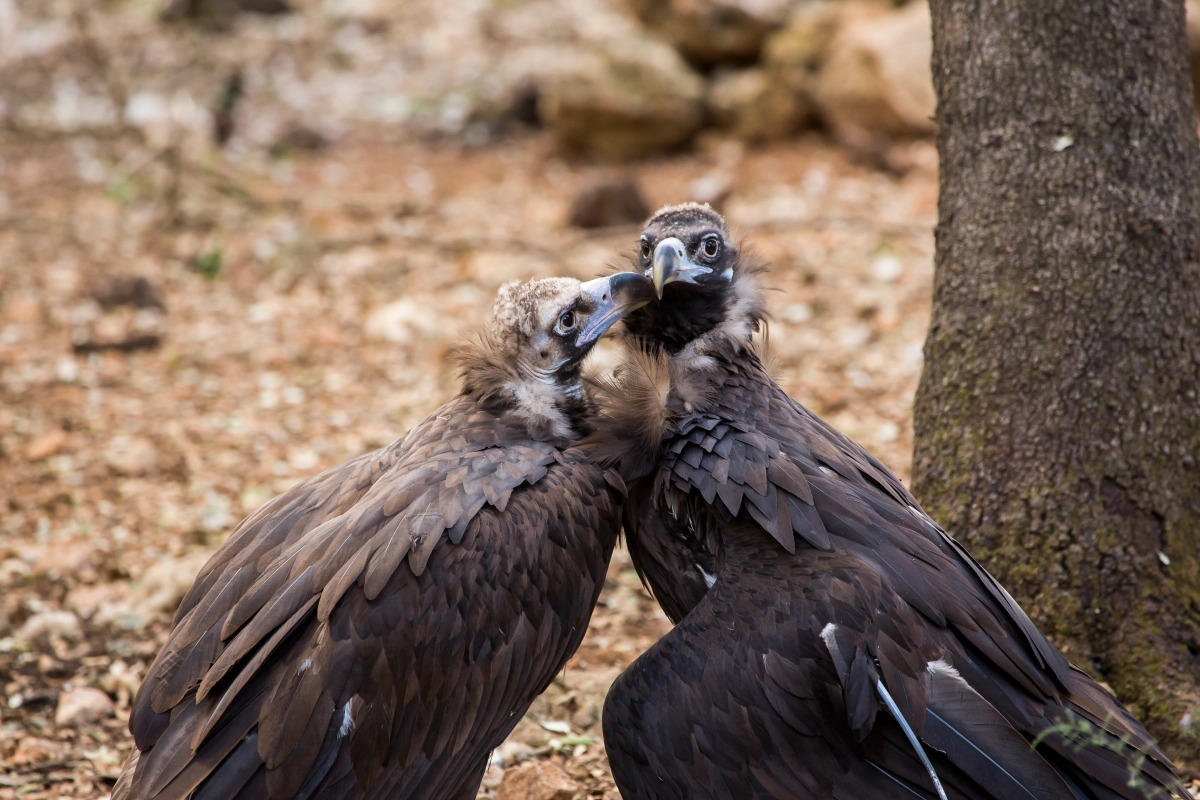The black vulture consolidates its population in Castilla y León with an all-time high of 661 pairs
The results of the black vulture census for 2022 have been published and the data are very encouraging, as a historic maximum of 661 pairs of this species has been recorded, one of the species included in the IA4Birds project to minimize the risks for this type of birds caused by the installation of wind farms in certain areas.
Every year, the specialists visit all the colonies in the Community, which are distributed in the sierras of Gredos, Avila, Guadarrama, Gata, Francia and La Demanda in the provinces of Avila, Segovia, Salamanca and Burgos, respectively. The breeding period of the black vulture lasts more than six months, so that since February the visits to the breeding colonies begin, where they count one by one the nests occupied by pairs of black vultures. Thus, throughout last spring, periodic visits were made to check the evolution of the reproduction and in the summer it is confirmed whether they have bred successfully.

Results of the 2022 report
The recently published report with data from Castilla y León shows in detail the results of the 2022 census and the evolution in each of the population centers. The census population was 661 pairs distributed in seven population centers, including the eastern massif of Gredos with 228 pairs and the Sierra de Guadarrama with 216 pairs. By provinces, Avila has the largest population with 311 pairs, Segovia with 213, Salamanca with 214 and Burgos with 13 pairs. The rapid growth of the population has been very striking for a species such as the black vulture, which is characterized by low reproduction rates, limited by the fact that only one chick is raised each year and that they begin to breed after five or six years.
These results are very useful for the development of the IA4Birds project, since among its objectives is to create a database and compile different sources of information on a single platform, so that developers can know suitable locations and consult other relevant information. Thus, and being able to count on the collaboration of wind farms in the future, it would not only be a matter of knowing where to locate new ones, but also of improving the conditions of existing wind farms.
It should be remembered that IA4Birds has the support of the Biodiversity Foundation of the Ministry for Ecological Transition and Demographic Challenge (MITECO), in the framework of the Recovery, Transformation and Resilience Plan (PRTR) funded by the European Union - NextGenerationEU.
The figures on the black vulture are encouraging as in just over three decades the population has practically tripled, from 231 pairs in 2000, 287 pairs in 2006, 466 in 2017, 585 in 2020, 597 in 2021 and up to 661 in 2022. This increase has also been reflected in the distribution by increasing from 18 UTM 10x10 km grid squares in 2000 to 36 in 2022. The increase in distribution is always smaller in magnitude than that of the population given the high fidelity to the breeding areas, which means that new pairs settle close to the birth areas. An exception to the latter has been the colonization of the Arribes del Duero, an area far removed from the existing population centers, where for the last decade several pairs have settled on the Portuguese bank of the Duero.
The presence of black vultures in a territory is taken into consideration for the declaration of Special Protection Areas for Birds (SPA). Under this figure of protection, which involves the application of specific conservation measures, no less than 582 pairs are located, 88% of those counted in 2022.

Conservation measures
In Spain, the species is included in the Spanish Catalogue of Threatened Species with the category of "vulnerable" and in European regulations it is included in Annex I of the Birds Directive, which establishes the need to adopt specific measures for the protection of the species and its habitats. Population monitoring makes it possible to assess the evolution of the populations, but the conservation of the black vulture also depends on the development of active conservation measures.
These conservation measures are aimed at mitigating those threats that involve the direct death of individuals and disturbance of breeding colonies. To reduce mortality, the Junta's commitment is unequivocal and translates into the correction of dangerous lines that each year cause the death of specimens and the application of the Action Plan for the eradication of the illegal use of poisoned bait in the natural environment of Castilla y León.
On the other hand, for more than two decades the forests of the community where the black vulture is present have been managed taking into account conservation criteria for this and other forest species such as the imperial eagle. The positive evolution of these species is due, among other factors, to the application of sustainable forest management practices and the existence of forest planning and management instruments in public and private forests, whose purpose is the conservation and improvement of the forest masses, as well as the protection of the biodiversity existing in them.
In spite of the application of conservation measures, the black vulture continues to face various threats, including deaths in power lines due to electrocution, shock and poisoning. Disturbances derived from different human activities have also been detected, which makes the management and planning of different leisure activities, forest exploitation, etc., even more necessary. In short, the current situation of the black vulture in Castilla y León is very positive and encouraging, although there are new challenges for its conservation, such as large fires or the management of the livestock remains on which it feeds. In this sense, the IA4Birds project, coordinated by AIR Institute and funded by Biodiversity Foundation, uses artificial intelligence to monitor the populations of birds such as the black vulture and thus minimize the risks to which they are exposed, ensuring their survival and welfare.